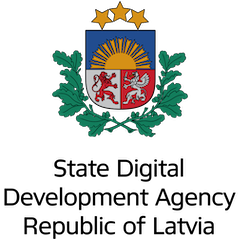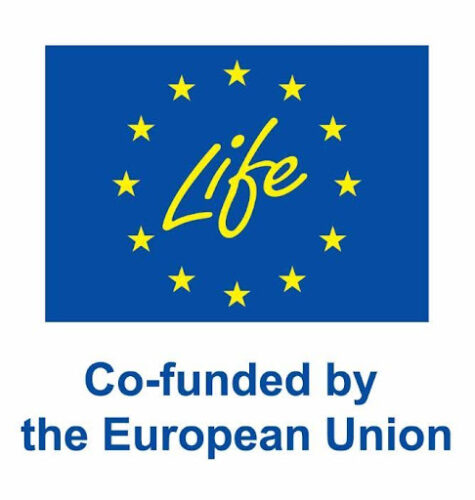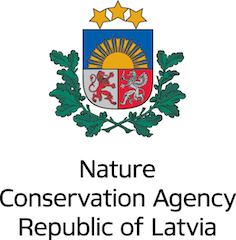Challenges
Salaca, the most important salmon river in the Eastern part of the central Baltic Sea basin, is a water body that needs special attention to improve its ecological quality. Both the Council Directive 92/43/EEC (May 21, 1992) on the protection of natural habitats, wild fauna and flora (Habitats Directive) and the Water Framework Directive 2000/60/EC of the European Parliament and the Council (Water Framework Directive) aim to ensure healthy water ecosystems while ensuring a balance between sustainable use of water resources and nature protection. In order to plan freshwater management more rationally, a new, unified framework for assessing the ecological quality of waters and the quality of habitats is needed. Such an approach will initially be developed for the sub-catchment of the Salacas River, so that later it will be applied to all river basin areas in Latvia and possibly elsewhere in the European Union.
Aim
The aim of the project is to promote the achievement of a good water condition in the rivers of the Salaca sub-catchment, as determined by the Habitats Directive, the Water Framework Directive and the objectives of the EU Biodiversity Strategy.
Several activities will be carried out in the project to achieve the above-mentioned project goal. The implementation of practical management measures and the development of planning documents with the aim of improving the quality of the rivers of the Salaca sub-catchment and preserving natural values in the long term, as well as the transfer of knowledge and good practices to the public and experts in the field.
1. Harmonization of the Habitats Directive and the Water Framework Directive in the model territory – Salaca sub-catchment
The Habitats Directive and the Water Framework Directive focus on the assessment, monitoring, protection and proper management of the quality of rivers and lakes. Although there are several differences in the approach of the two directives, they have the same goal – to achieve good quality in freshwater ecosystems. Taking into account the connection between the two directives, the implementation of management measures within the framework of the Water Framework Directive also benefits the achievement of the objectives of the Habitats Directive, and vice versa. However, a clearly defined approach to the harmonization process of the Water Framework Directive and the Habitats Directive is necessary. In the LIFE IS SALACA project, a new approach to freshwater quality assessment and management will be developed, combining the requirements of both directives in the Salaca sub-catchment as a model territory. Based on the example of the Salacas sub-catchment, guidelines will be prepared for the development of a unified monitoring network – a step-by-step methodical approach, so that it can be used in other river basins in Latvia as well as in other EU member states.
2. Development of the nature protection plan of the Natura 2000 area “Salaca Valley” in a new framework
The “Salaca Valley” nature park does not currently have a valid nature protection (hereinafter referred to as DA) plan. The previous DA plan was developed in 2005, extended until 31.12.2019, in which the Salaca river was divided into four stages, each of them developing its own plan. As part of the project, it is planned to develop a DA plan, including the project results from the harmonization process of the Water Framework Directive and the Habitats Directive and the management methods of riparian forests and fish habitats implemented in the project, in order to create a new and integrated Natura 2000 area management plan, which will serve as a basis not only for habitats of EU significance and for the protection and preservation of species, but will also include management activities necessary for the implementation of the measures of the Water Framework Directive, regulation of tourism load, provision of ecosystem services, etc.
3. Improving habitat availability, quantity and quality for ecologically sensitive fish species
The protection status of protected habitat of EU significance 3260 “Rapid flows and natural river sections” in Latvia has been assessed as insufficient. Poor conservation status means that the habitat is in a situation where management or policy change is needed to return the habitat to a favorable conservation status and is not threatened with extinction in the foreseeable future. Excessive eutrophication and sedimentation is one of the most important factors that reduce the quality and, to some extent, the quantity of habitats for ecologically sensitive fish species. The habitat improvement guidelines prepared within the framework of this project can be adapted for use in other Latvian salmon lakes (Gauja, Venta, Irbe, etc.) with relatively minor adjustments, thereby increasing the efficiency and benefit of similar activities.
4. Management of riparian forests
The law on buffer zones defines the principles (mostly prohibiting) how to manage riparian forests in order to prevent the development of erosion processes, however, when managing river buffer zones according to the existing principles, thousands of cubic meters of sediment enter the rivers every year, which settles in rivers, including rapids, and contributes to the deterioration of their quality. The overgrown white alder forests on the river banks have reached their ecological potential and are no longer able to absorb the nutrients coming from the catchment basin as successfully. Observing the existing principles of the Law on Guardrails reduces the value of ecosystem services, watercourses are polluted with sediments, and they lose their water self-purification functions. The aim of this project activity is to demonstrate a new approach in the management of riparian forests, the attraction of nutrients, as well as the reduction of eutrophication. This can be done by optimally choosing the composition of tree species in the forest, which will positively affect and increase the diversity of vegetation in the forest, as well as improve the quality of watercourses, providing diverse living conditions for the plant and animal species inhabiting the river and its coast.
5. Application of ecosystem service assessment in land use modeling
The Salaca and its tributaries provide many essential ecosystem services. The most important supply services are fish resources and timber obtained from forests growing on river banks. The most important regulation and maintenance services are regulation of climate and water circulation, maintenance of fresh water quality, erosion control, pollution filtering, accumulation of nutrients and provision of habitats (living, breeding, feeding places, migration corridors). The range of cultural services is also important, which includes both recreational opportunities and also provides people with spiritual, aesthetic enjoyment, serves as a source of inspiration and provides cultural heritage, scientific and educational services. The improved knowledge about the methods of management and restoration works applied in the Salaca river valley and the slopes of the river valley and the ecosystem services provided are essential to ensure the appropriate management of the Salaca and its tributaries and to achieve sustainable development in accordance with the Habitats Directive, the Water Framework Directive and the EU Biodiversity Strategy for 2030 the set goals.
Costs
Total budget EUR 5,754,798.12, incl. The amount of the European Commission’s financial contribution is 3,452,878.88 EUR, the amount of Latvian national co-financing is 1,866,957.61 EUR and the co-financing of partners is 434,961.63 EUR.
Co-financed by:








